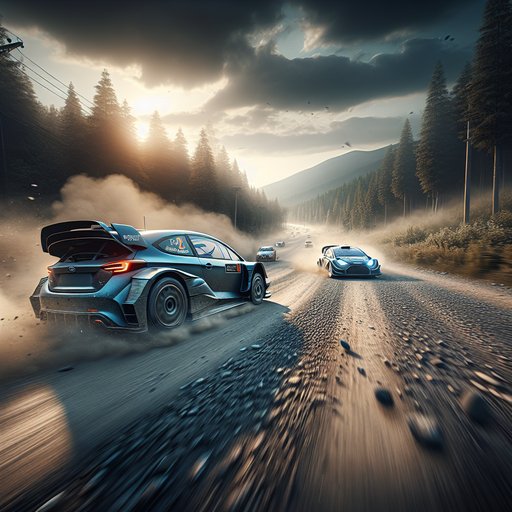
Ford re-energized its World Rally Championship presence through M-Sport, first with the Fiesta WRC under the 2017 rules reset and then with the hybrid Puma Rally1 from 2022. Their program has delivered landmark wins and championships while battling manufacturer heavyweights Toyota and Hyundai, plus Citroën before its exit in 2019.
After Ford’s factory withdrawal at the end of 2012, M-Sport kept the Blue Oval in the WRC as a privateer. The 2017 regulation overhaul—more aero freedom, a larger turbo restrictor, and lighter cars—created an opening. M-Sport developed the Fiesta WRC around a 1.6L turbo inline-four (≈380 hp), mechanical front/rear differentials, and aggressive aero (larger wings, splitters, and diffusers). Ford increased technical and financial backing for 2017–2018, formalized as M-Sport Ford World Rally Team.
The results were immediate. Sébastien Ogier won the 2017 drivers’ title and M-Sport secured the manufacturers’ crown against Hyundai’s i20 Coupe WRC and Toyota’s returning Yaris WRC. In 2018, Ogier repeated the drivers’ championship with the Fiesta WRC, edging Hyundai’s Thierry Neuville in a season-long points battle. Toyota claimed the manufacturers’ title that year, highlighting the competitive parity and resource differences M-Sport faced against full-factory squads.
WRC’s Rally1 era from 2022 reshaped the technical landscape: a spec 100 kW hybrid unit paired with the 1.6L turbo, a 3.9 kWh battery for regen/boost, sustainable fuel, and an FIA safety cell within a tubular spaceframe. The M-Sport Ford Puma Rally1 leveraged up to ~500 hp during hybrid boosts, with simplified aero versus 2017-spec cars. Sébastien Loeb’s 2022 Monte Carlo victory—over Toyota’s Ogier in a final-stage duel—became the hybrid era’s hallmark upset and Ford’s first hybrid-era win. Against Toyota Gazoo Racing’s GR Yaris Rally1—renowned for reliability, traction, and consistent hybrid deployment—and Hyundai’s i20 N Rally1, M-Sport fought on tighter budgets and fewer test days.
Ott Tänak’s 2023 return to M-Sport delivered wins in Sweden and Chile, demonstrating the Puma’s peak pace, but inconsistencies and development cadence limited a sustained title run. Toyota’s Kalle Rovanperä set the modern benchmark, supported by a deep driver roster and strong in-house engineering throughput. In 2024, M-Sport’s focus shifted to maximizing efficiency and drivability. Adrien Fourmaux delivered a string of podiums on diverse surfaces—snow, rough gravel, and asphalt—underscoring chassis compliance and dependable hybrid energy mapping.
With Grégoire Munster gaining mileage, the team emphasized incremental upgrades within homologation allowances and careful use of limited test mileage. Customer programs and parts supply remain central to M-Sport’s business model, balancing competitiveness with sustainability. Ford’s modern WRC return has been defined by smart engineering and strategic driver signings rather than brute spending. The Fiesta WRC and Puma Rally1 proved that an agile, independent outfit backed by a global OEM can still win against fully funded rivals.
Their presence sustains multi-manufacturer competition, advances hybrid rally technology, and preserves the WRC’s mix of innovation, cost control, and world-stage relevance.












